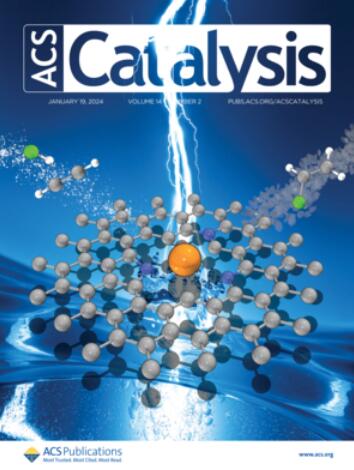Benchmarking the Stability of State-of-the-Art H2O2 Electrocatalysts under Acidic Conditions
IF 11.3
1区 化学
Q1 CHEMISTRY, PHYSICAL
引用次数: 0
Abstract
Electrocatalytic hydrogen peroxide (H2O2) production presents a promising alternative to conventional synthesis methods, such as the anthraquinone process. It utilizes electrocatalysts to selectively reduce oxygen through a two-electron transfer (ORR-2e–) mechanism. However, designing affordable, selective, and stable catalytic materials is challenging, as they face degradation under reaction conditions. To evaluate the long-term performance and reliability of electrocatalysts, accelerated stress tests (ASTs) are commonly employed to simulate and understand the catalyst’s degradation pathways in a shorter time. For the electrosynthesis of H2O2, however, a standardized approach is notably absent, and there is a dearth of comparative analysis across various catalyst classes. In this study, we have designed and tested three distinct AST protocols to investigate the deactivation processes involved during the electrocatalytic H2O2 production in acidic media. We assessed the performance of four leading catalysts, each exhibiting over 90% selectivity. These included palladium single atoms, gold and palladium nanoparticles, and cobalt nanoparticles encapsulated in carbon, all supported on high surface area carbon. Our investigation revealed substantial variations in stability, contingent upon the specific material and the applied degradation protocol. This approach enables a comprehensive understanding and evaluation of the stability of electrocatalysts as well as facilitates the development of more continuous and cost-effective H2O2 production routes.

酸性条件下新型H2O2电催化剂稳定性的基准测试
电催化过氧化氢(H2O2)生产是传统合成方法(如蒽醌法)的一种有前途的替代方法。它利用电催化剂通过双电子转移(ORR-2e -)机制选择性地还原氧。然而,设计负担得起的、选择性的、稳定的催化材料是具有挑战性的,因为它们在反应条件下面临降解。为了评估电催化剂的长期性能和可靠性,通常采用加速压力测试(ast)来模拟和了解催化剂在较短时间内的降解途径。然而,对于H2O2的电合成,显然缺乏标准化的方法,并且缺乏对各种催化剂类别的比较分析。在这项研究中,我们设计并测试了三种不同的AST协议,以研究酸性介质中电催化H2O2生产过程中的失活过程。我们评估了四种主要催化剂的性能,每种催化剂的选择性都超过90%。其中包括钯单原子,金和钯纳米粒子,以及包裹在碳中的钴纳米粒子,所有这些都由高表面积的碳支撑。我们的调查揭示了稳定性的实质性变化,取决于具体的材料和应用的降解方案。该方法可以全面了解和评估电催化剂的稳定性,并有助于开发更连续、更具成本效益的H2O2生产路线。
本文章由计算机程序翻译,如有差异,请以英文原文为准。
求助全文
约1分钟内获得全文
求助全文
来源期刊

ACS Catalysis
CHEMISTRY, PHYSICAL-
CiteScore
20.80
自引率
6.20%
发文量
1253
审稿时长
1.5 months
期刊介绍:
ACS Catalysis is an esteemed journal that publishes original research in the fields of heterogeneous catalysis, molecular catalysis, and biocatalysis. It offers broad coverage across diverse areas such as life sciences, organometallics and synthesis, photochemistry and electrochemistry, drug discovery and synthesis, materials science, environmental protection, polymer discovery and synthesis, and energy and fuels.
The scope of the journal is to showcase innovative work in various aspects of catalysis. This includes new reactions and novel synthetic approaches utilizing known catalysts, the discovery or modification of new catalysts, elucidation of catalytic mechanisms through cutting-edge investigations, practical enhancements of existing processes, as well as conceptual advances in the field. Contributions to ACS Catalysis can encompass both experimental and theoretical research focused on catalytic molecules, macromolecules, and materials that exhibit catalytic turnover.
 求助内容:
求助内容: 应助结果提醒方式:
应助结果提醒方式:


